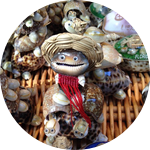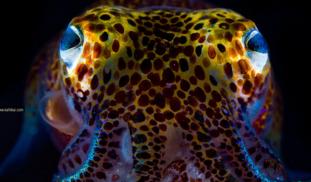Please wait...
About This Project
The Hawaiian Bobtail squid has a glowing bacterium that lives in a specialized organ on their underside. As the squid swims at night, the bacteria glow, preventing predators from detecting the squid's silhouette against the moonlight. Squid immune cells are able to distinguish beneficial from harmful bacteria and know to kill only harmful bacteria. Our lab researches how the immune system makes this decision.

Browse Other Projects on Experiment
Related Projects
How do polar bears stay healthy on the world's worst diet?
Polar bears survive almost entirely on seal fat. Yet unlike humans who eat high-fat diets, polar bears never...
Uncovering hidden insect diversity associated with a likely undescribed gall-forming midge
Does a likely undescribed species of gall-forming midge (pers. comm. Ray Gagné) on Eriodictyon plants (Yerba...
Macrofungi of the California archipelago
The eight islands of the California Archipelago are a well-studied biodiversity hotspot — but we know almost...





